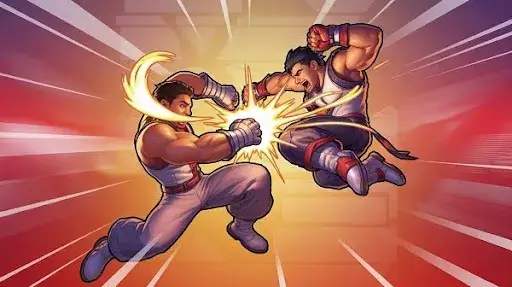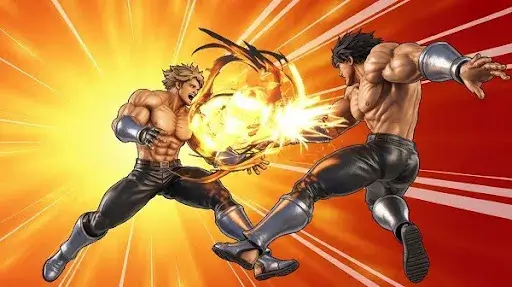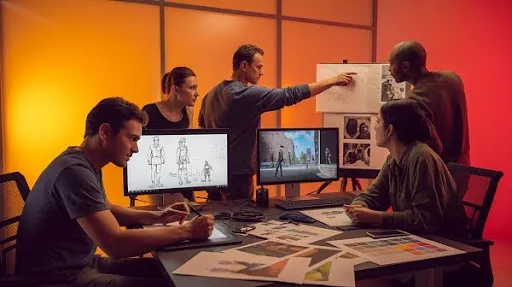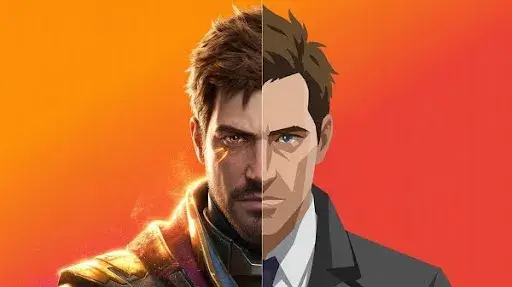A punch lands in a fighting game, and the screen shakes, sound breaks for a millisecond, and the opponent folds like a spring being slammed shut. That hit never happened the way physics would allow. But it felt real. More real than realism itself.
That is the power of exaggerated animation. Not realism. Not accuracy. Emotion. Impact. Memory. The best top animation services don’t chase realism in combat games. They chase clarity, style, and reaction. Players don’t want a punch that resembles a punch. They want a punch that tells a story.
Exaggerated Animation: The Secret Language of Fighting Games
Fighting games speak in motion. Every attack, reaction, and frame sends a message to the brain. No move has the luxury of being subtle because players don’t watch a fight. They read it and respond in fractions of a second.
That’s where exaggerated animation becomes a survival tool, not a style choice. It stretches bodies, bends timing, freezes motion, and amplifies energy so the player understands:
- What happened
- Who caused it
- How hard it hit
- What’s coming next
Subtle movements vanish at 60 frames per second. Big movements become readable. That’s the truth every fighting game animation artist works with.
What is Exaggerated Animation in Fighting Game Design?
It’s realism turned up to a volume realism never reaches. A normal punch moves the arm. An exaggerated punch moves the arm, the spine, the anticipation recoil, the snap, the frame hold at contact, the screen flash, and then the explosive reset.
It’s not a distortion for decoration. It is motion engineered for the human eye and brain. The rules of bones, gravity, and muscle timing still exist. They just get rewritten in bold letters.
Exaggerated Animation vs. Realistic Animation
| Realistic Animation | Exaggerated Animation |
| Copies real physical limits | Breaks them on purpose |
| Small predictable motion | Loud readable motion |
| Hard to process at game speed | Easy to register instantly |
| Feels accurate | Feels powerful |
| Looks soft in action scenes | Looks sharp and intentional |
Realism cares about how movement would happen. Exaggerated animation strives to show how movement feels. A real uppercut lifts an opponent a few inches. A fighting game uppercut sends them sky-high with trails, impact freeze, and a recoil that screams dominance. Players remember the second one.
Why Games Need Exaggerated Animation
Fighting games do not run at cinematic speed. They run at decision speed. At 60 FPS, each frame appears for 16 milliseconds. No room for subtlety. No room for tiny details.
Without exaggerated poses:
- Moves look identical
- Hits feel weak
- Animations blur into each other
- The game loses personality
- Players can’t react in time
Exaggeration turns a motion into a statement. A jab becomes a flick. A grab becomes a declaration. A special move becomes a headline moment. That clarity keeps games playable, competitive, and fun. This could all be easily achievable if you partner with a studio that provides high-quality game animation services, like Prolific Studio.
How Top Animation Services Use Exaggeration to Create Impact
Studios offering 3D animation services and 2D animation services both use exaggerated animation, but the methods shift depending on dimension and style. 3D demands shape exaggeration through rig control, timing, smear meshes, stretched models, and impact spikes. 2D leans on drawn distortion, motion smears, wild frame holds, and flexible anatomy.
Both meet at the same goal: fluid animation that communicates fast. At Prolific Studio, exaggerated animation isn’t a spice added later. It’s baked into the motion blueprint from the first sketch.
The 12 Principles of Animation That Birth Exaggeration
The principles of animation are the mother tongue of fighting game motion. Exaggeration is the shout that makes the sentence heard. Here’s how the essentials come into play:
1. Squash and Stretch
Bodies compress before impact and stretch on release. Not cartoon, not rubber, but enough to imply force.
2. Anticipation
Every attack whispers before it screams. Shoulder pulls back. Knees dip. Energy coils. The bigger the attack, the louder the wind-up.
3. Staging
Players must register actions instantly. Poses are designed like billboards, clear from every angle.
4. Follow-Through & Overlap
After a punch, the body doesn’t stop at once. Chests settle, arms recoil, belts swing, hair drags a beat later. This is the detail that separates stiff animation from something alive.
5. Timing
A single extra frame can soften the impact. A missing frame can destroy the weight. Timing doesn’t just animate the move; it also shapes it. It animates the reaction it should cause in the player.
6. Arcs
Nothing powerful moves in straight lines. A kick swings in curves. A jump bends in crescents. Real life agrees. Good animation amplifies.
7. Exaggeration (Principle #10)
The rule that handles all other rules by turning up their contrast. Bigger stance. Stronger recoil. Sharper pause. Harder reset. Without it, nothing stands out. With it, every frame speaks.
Game Readability Starts With Silhouettes
A silhouette test is simple. Black out the entire character and keep only the shape. Can you still tell:
- The attack type?
- The body orientation?
- Who has the advantage?
- What happens next?
If yes, the animation is working. If no, exaggeration is missing. Fighting games exaggerate shapes on purpose.
- Wide stance = power move incoming
- Low compression = jump or evade
- Expanded limb shape = long-range strike
- Compact frame = recovery or defensive window
Every distortion is information.
Anticipation Isn’t Drama. It’s Fairness
Fighting games follow a three-pulse rhythm:
- Prepare (anticipation)
- Deliver (the strike)
- Settle (the aftermath)
Anticipation isn’t decoration. It gives the other player a fair chance to react.
A heavy attack should look heavy before it lands.
- Light attacks blink into motion
- Medium attacks pull back briefly
- Heavy attacks coil like slingshots
- Ultimate moves pose like announcements
No exaggeration means no telegraphing. No telegraphing means no strategy. No strategy means no fighting game.
Types of Game and Animation Exaggeration
Different games exaggerate differently depending on identity, audience, and pacing. Exaggeration is not one flavor. It’s a scale, a toolkit, a style, and sometimes a whole personality.
Prolific Studio designs animation knowing one rule: Consistency matters more than intensity. A game can be wild or subtle, loud or grounded, elastic or rigid. But it must commit to its language. Players forgive exaggeration. They don’t forgive inconsistency.
The Psychology of “Feeling the Hit”
In fighting games, impact isn’t measured in physics. It’s measured in reaction. A perfectly simulated punch would follow Newtonian math, muscle limits, real weight distribution, real gravity, and organic timing. But the problem? It would also feel underwhelming.
Human brains don’t register realism as excitement. They register contrast, rhythm, rhythm breaks, and sensory payoff. This is why exaggerated animation leans on:
- Micro-freeze at impact (a blink of time stopping)
- Screen punch effects (shake, zoom, chromatic pop)
- Recoil overcompensation (body snapping back harder than expected)
- Follow-through that overshoots (because satisfaction lives in excess)
- Visual interruption (flash, smear, glow, debris, motion blur accents)
A hit that is too clean feels empty. A hit that interrupts reality for a millisecond feels legendary. That interruption is where players emotionally process “Yes. I did that.”
Enhanced Animation Is Not Just Visual, It’s Game Feedback
In fighting games, animation replaces words. It communicates what UI, dialogue, and explanations can’t. When a character reels dramatically after a hit, the game is saying:
- “That hurt.”
- “You landed perfectly.”
- “The tide of the fight just shifted.”
When they stagger, slide, bounce, or slam — the game is guiding the player’s emotions with motion. This is why exaggerated animation is tightly linked with feedback loops:
| Animation Reaction | Player Interpretation |
| Heavy recoil backward | “That attack was high damage.” |
| Bounce off the ground | “That was a juggle-start.” |
| Stagger backward instead of falling | “I can still combo.” |
| Slow collapse animation | “This round is over.” |
Animation doesn’t decorate combat. It communicates the rules of combat without speaking.
“Overreaction” Is Actually Precision Design
To outsiders, exaggerated animation might look random, artistic, or hyperbolized for style. But within game design, it’s closer to mathematics. Fighting game animation teams carefully calculate:
- How many frames a move should take
- Which frame the hitbox becomes active
- How long the opponent is in stun state
- Which frame conveys peak damage emotion
- How many frames recovery should take for fair counterplay
What looks like visual madness is actually frame discipline wearing dramatic makeup. A kick might overshoot wildly, but it overshoots with intent:
- 3 frames of anticipation
- 6 frames of acceleration
- 2-frame hit pause
- 10 frames of recoil recovery
- 4 frames of personality flair
The goal isn’t realism. It’s rhythmic fairness and emotional amplification at the same time.
Character Identity Is Animated, Not Written
You don’t learn a fighter’s personality from their biography. You learn it from how they move when they hit you.
Street brawler archetypes punch like earthquakes, grounded, explosive, and hip-leading. Nimble assassins snap into strikes and snap out like flicked whips. Elegant swordsmen pose longer than they need because style is part of their damage.
All personality is conveyed through exaggerated choices:
- Idle breathing rhythm
- Over-the-top flourishes on victory
- Wind-ups that match temperament
- How long do they hold eye contact mid-attack
- Whether they recover aggressively or calmly
Exaggeration becomes the character’s signature accent. Remove it, and every fighter becomes the same person wearing different skins.
The Risk of Not Pushing Far Enough
Most animation errors in fighting games don’t come from going too far. They come from not going far enough.
Under-exaggerated combat animation causes:
- Attacks feeling weak
- Opponents reacting ambiguously
- Similar moves blending together
- Unclear priority windows
- Loss of player satisfaction
- Reduced competitive clarity
- Forgettable character kits
When a game feels “floaty” or “soft” or “weightless,” it’s almost never because of physics. It’s because the exaggeration layer wasn’t pushed to its communication threshold. In other words, it’s not unrealistic enough to feel real.
Exaggerated Animation in 2D vs 3D
Both 2D and 3D fighting games rely on exaggeration, but they achieve it through different creative weapons. This difference is easy to understand when you leverage exceptional game trailer services from a world-renowned animation company.
2D Animation Exaggeration Tools:
- Hand-drawn smears
- Frame-by-frame distortion
- Impossible joint bends
- Elastic anatomy
- Stylized stretch frames
- Painterly motion trails
- Non-uniform spacing between frames
3D Animation Exaggeration Tools:
- Rig deformation
- Mesh stretching
- Motion capture offsets
- Procedural secondary motion
- Vertex shader distortion
- Impact frame interpolation
- Additive animation layers
2D can break anatomy entirely and still look intentional. 3D must sell exaggeration without snapping the illusion of bone structure. The mediums are different. The goal is identical: Make the player feel the impact faster than their brain analyzes it.
Exaggeration and Competitive Integrity
A common myth: “Exaggeration is for casual flashy games, not serious competitive fighters.”
The reality is the opposite. Competitive fighting games depend on exaggerated animation more than any other genre because their entire skill ceiling is built on:
- Reading opponent intent
- Recognizing startup frames
- Identifying punish windows
- Responding before the attack lands visually
- Predicting from silhouette and motion grammar
A competitive player doesn’t react to hits. They react to exaggerated intent moments before the hit exists. This is why tournaments thrive on games with clear, loud, theatrical motion languages. If a fighting game is subtle, it becomes uncompetitive. If it is expressive, it becomes strategic.
The Role of Sound in Exaggerated Motion
Exaggeration is never visual alone. A well-animated punch paired with weak audio still feels weak. A modest animation paired with great audio feels twice as strong.
The magic happens when:
- Animation peaks and sound peaks land on the same frame
- Micro-silences lead to impact
- Bass accents follow heavy motions
- Whooshes stretch longer than the actual swing
- Hits don’t just register; they explode audibly
Players remember moments. Sound makes those moments unforgettable.
How Studios Push It Further Today
Modern fighting games now stack exaggeration layers like a visual language sandwich:
- Key pose exaggeration
- Timing exaggeration
- Impact freeze exaggeration
- Camera exaggeration
- VFX exaggeration
- Sound exaggeration
- UI exaggeration (health spike, hit counters, slow zooms, etc.)
No single layer carries the experience. It is the orchestration that gives combat its heartbeat. At top animation studios, combat is not animated; it is performed, conducted, edited, and amplified.
Frequently Asked Questions
Why do fighting games exaggerate movement so much?
Exaggeration improves readability, emotional impact, and gameplay clarity. Subtle motion is too slow for the brain to digest at 60 FPS, while exaggerated motion communicates intent instantly.
Does exaggerated animation make a game feel unrealistic?
Yes, but intentionally. The goal isn’t realism, it’s heightened believability, where the movement feels powerful, satisfying, and emotionally convincing rather than physically accurate.
Is exaggerated animation more common in 2D or 3D fighting games?
Both use it heavily, but differently. 2D exaggerates through drawn distortion and smears, while 3D uses rig manipulation, mesh stretching, camera effects, and layered animation data.
Can exaggerated animation hurt competitive gameplay?
No, it strengthens it. Competitive players rely on exaggerated telegraphing and silhouettes to read attacks, anticipate counters, and make frame-level decisions.
How does exaggeration improve hit feedback?
Through impact freeze, overshoot timing, body recoil, screen effects, audio synchronization, and character deformation, all of which amplify the emotional sensation of impact.
Final Words
Exaggerated animation is not spectacle. It is the core communication system of fighting games. It makes combat readable, memorable, emotional, strategic, fair, and deeply satisfying.
Realism tells the truth. Exaggeration tells the experience of truth. And in fighting games, players don’t want to watch physics. They want to feel impact. Because a great punch is not one you believe could happen. It’s one you believe actually happened to you.
Related Articles:










